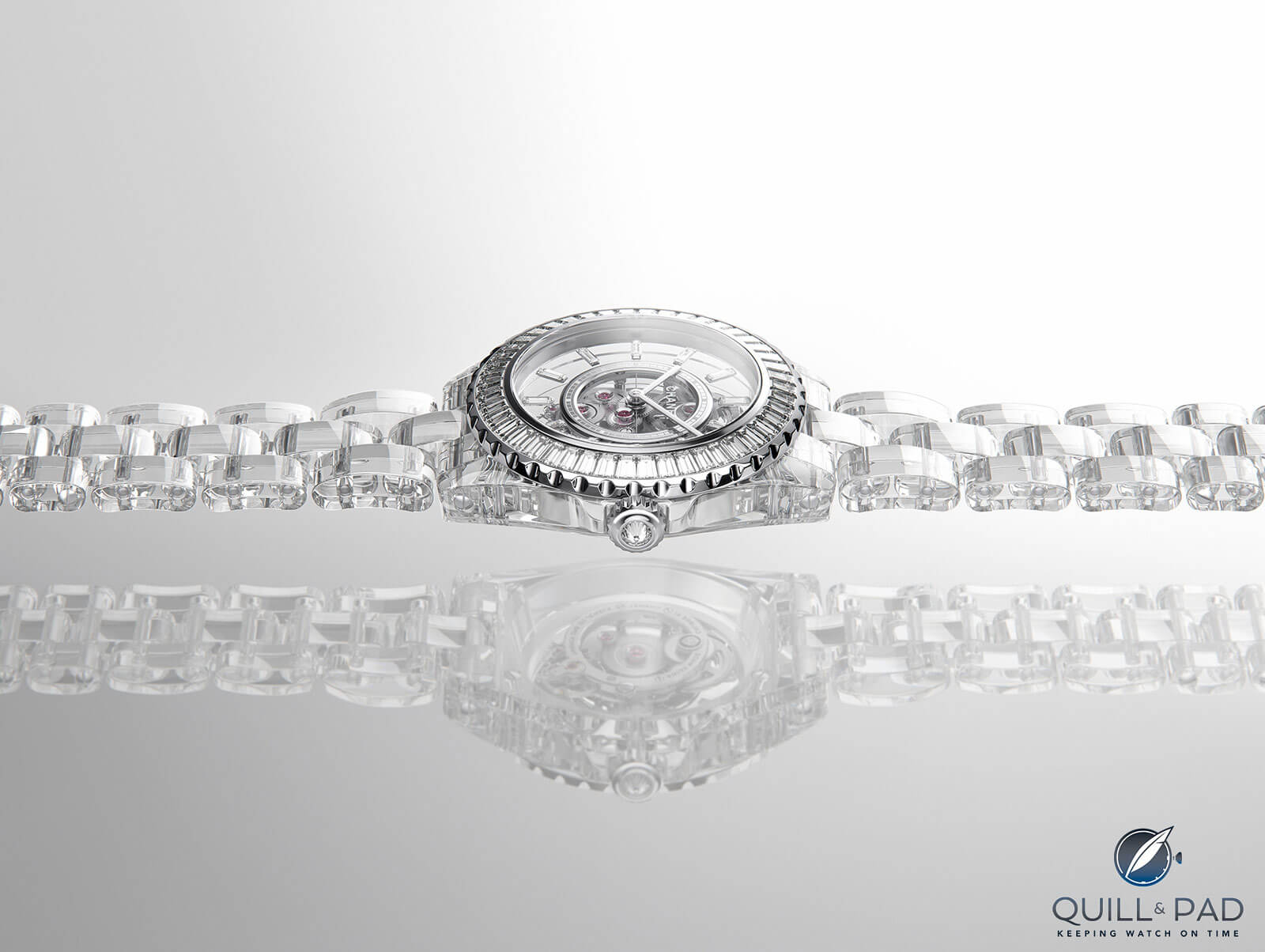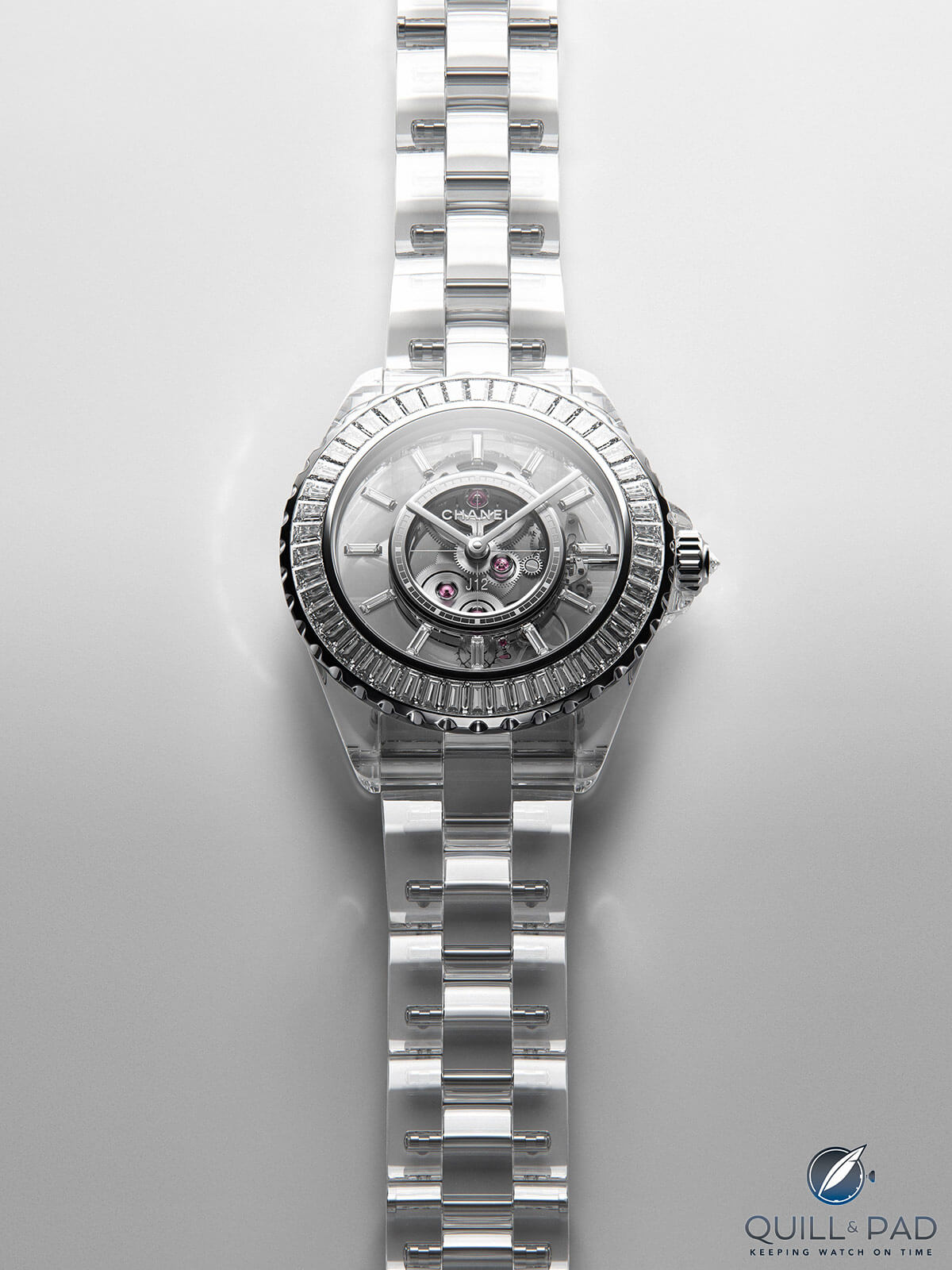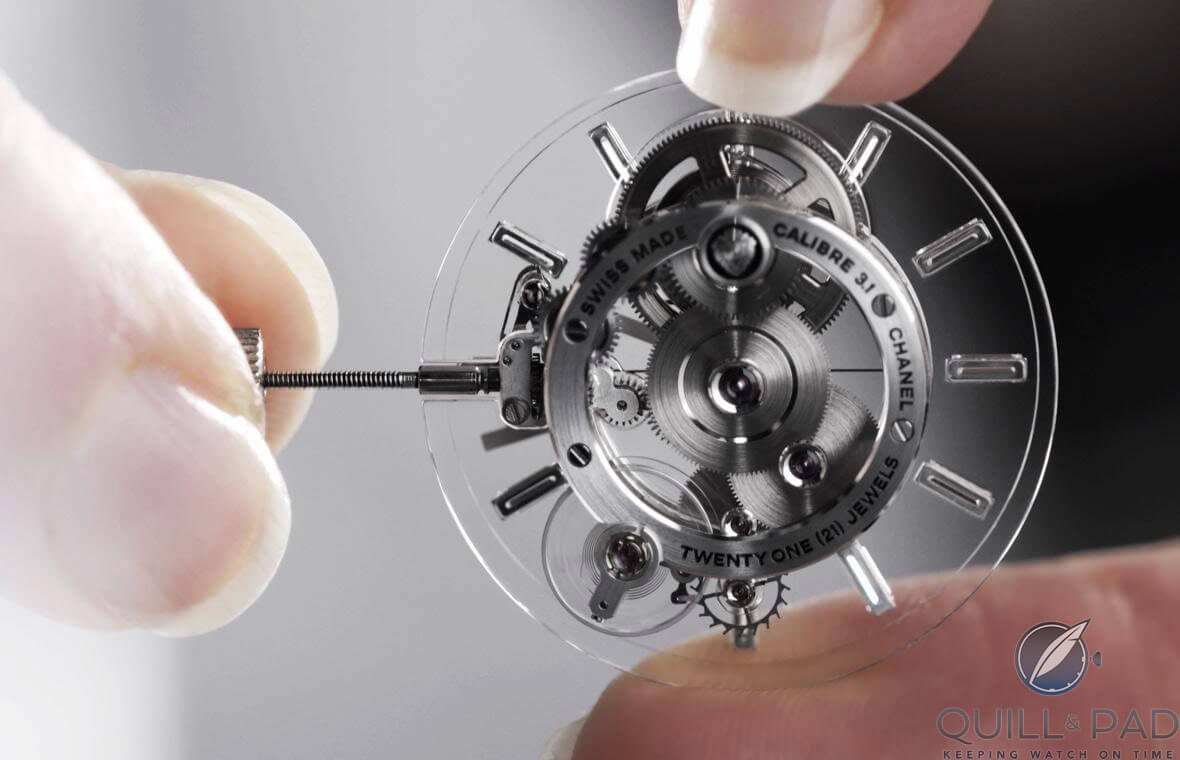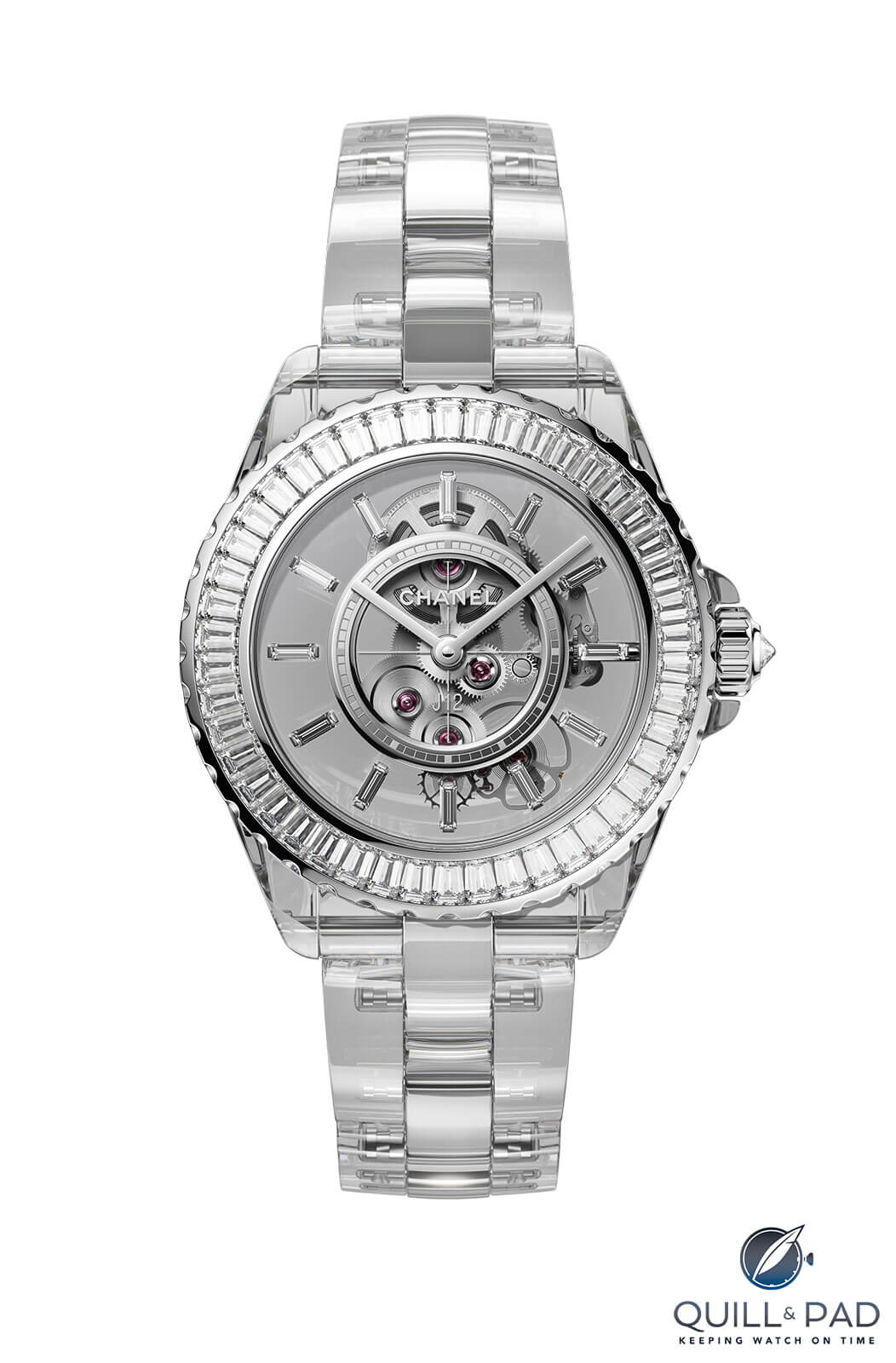Fashion is no longer a dirty word in watchmaking and hasn’t been for a while among knowledgeable connoisseurs. Some serious makers like Chanel are proof positive that transferring epochal style labels to ticking metal can entice both watch enthusiasts and fashionistas alike.
In 1987, the company that brought the fashion world icons including the little black dress and Chanel No. 5 decided to take watches seriously with the Première. Its 2017 thirtieth-anniversary timepiece, the Première Camellia Skeleton, is a masterful haute horlogerie reinterpretation with a visually and technically interesting manufacture movement.
It’s great that such an innovative fashion brand is not content with simple private label horology. Chanel took the hard road and today boasts ownership of Swiss manufacturing facilities and stakes in prestigious independent watchmakers such as F.P. Journe and Romain Gauthier.
Which brings us to Chanel’s J12 model. Debuting in 2000 one may even rightfully label this watch that interminable marketing buzzword: iconic.
A ceramic watch very much ahead of its time, it successfully fulfilled designer Jacques Helleu’s demands on it: simplicity and timelessness. And we can indeed add innovative use of ceramic to the list of its attributes.
Interestingly, too, Chanel hasn’t rested on its laurels throughout these 20 years, as lines like the newer Monsieur de Chanel and Boy.Friend demonstrate.
But let’s come back to the J12, which celebrates its twentieth anniversary in the unfortunate and, horologically speaking, drab year 2020. Despite the lack of official fanfare due to the outbreak of COVID-19, Chanel managed to release something to take the breath away.

Chanel J12 X-RAY with sapphire crystal bracelet
Chanel J12 X-Ray: wow!
First of all, know this: the J12 X-Ray’s superpower is in typical Chanel J12 manner more material than horological. It is the world’s first watch with a full sapphire crystal bracelet.
Sapphire has already been used for more than just watch crystals – just check out these five sapphire crystal-encased watches from Baselworld 2016.
However, despite the increasing number of brands using sapphire crystal cases for mainly limited editions and one-offs now, it’s still worth highlighting just how difficult it is to work with: eight years ago in 2012, Richard Mille launched the RM 056 cased entirely in sapphire crystal. The brand could only make five pieces per year because each case took more than 1,000 hours to machine, with each one completed retailing at around $1.6 million.
Following that, its use has become much more frequent as Hublot has demonstrated with a technology that mixes the sapphire crystal with resin components in the Big Bang Unico Sapphire models, bringing the price down exponentially (around $65,000) and allowing the case to be manufactured at volume (500 pieces and more per edition).
Despite the advances, however, no brand until now has manufactured a bracelet in sapphire crystal.
I’m not surprised it has taken this long: sapphire crystal is as hard a material to work with as they come. It is also just about as hard as it comes, which makes it exceptionally brittle and highly susceptible to damage if shocked during a machining process (or dropped on a hard surface). Not only that, though not quite as heavy as 18-karat gold sapphire crystal is quite heavy. Pick up that Richard Mille RM 056 and you are likely to be surprised by its heft.

Chanel J12 X-Ray with sapphire crystal bracelet
Nonetheless, the J12 X-Ray’s case and three-link bracelet are made of the transparent corundum material, with the buckle and bezel in diamond-set white gold. This bracelet is a world premiere.

Chanel J12 X-Ray with sapphire crystal bracelet
The dial is also sapphire crystal and set with 12 baguette-cut diamond hour markers. And talk about minuscule work: I would not want to be the one to have to drill the tiny holes in that sapphire crystal dial blank to set the stones. That’s a nearly impossible task due to the hardness and brittleness of the material, one that it is so prone to splintering. That’s definitely a delicate operation.
The caliber powering this marvel is a new iteration of Caliber 3, called Caliber 3.1, which also contains a number of sapphire crystal components, including the base plate and main bridges. The effect is that the visible metal components and synthetic rubies appear to float like Wonder Woman inside her invisible jet.

Chanel manufacture Caliber 3.1 powers the J12 X-Ray
Caliber 3.1 is a reworked version of Caliber 3, introduced in 2018 in the Boy.Friend Skeleton. Chanel reports that it takes a week to assemble the delicate parts (but unfortunately has not yet revealed much more than what I’ve shared here).
I’m not sure we’ll ever get to see this piece in the metal or – gasp – handle it. So the stunning video on the Chanel website will have to suffice for the time being. But such is the violent nature of 2020’s mercurial ability to be both boring and anxiety-inducing at the same time.

Chanel J12 X-Ray with sapphire crystal bracelet
But what a way for Chanel to celebrate the J12’s twentieth-anniversary! I salute the high-visibility audacity.
For more information, please visit www.chanel.com/us/watches/manufacture-movement-watches.
Quick Facts Chanel J12 X-Ray
Case: 38.6 x 10.7 mm, sapphire crystal with a diamond-set white gold bezel (5.46 ct), diamond-set crown
Movement: manual winding manufacture Caliber 3.1, skeletonized, power reserve 50 hours; 4 Hz/28,800 vph frequency, variable inertia balance, sapphire crystal plates and bridges
Functions: hours, minutes
Limitation: 12 pieces
Price: $626,000
You may also enjoy:
Chanel Introduces Première Camellia Skeleton With Manufacture Movement
Chanel Boy.Friend Skeleton: Intriguing Views From All Angles
Leave a Reply
Want to join the discussion?Feel free to contribute!





















































Hola, no se hablar ni escribir inglich pero quiero ser socia de sus productos espero tener respuesta atte